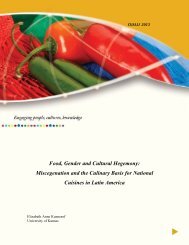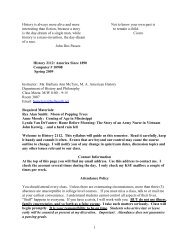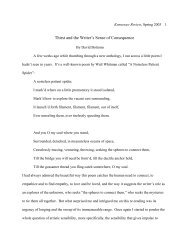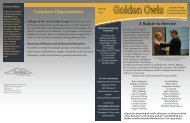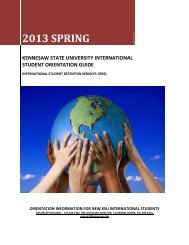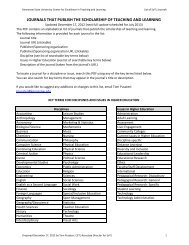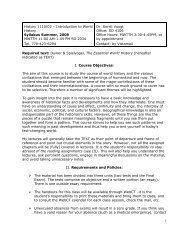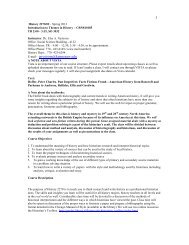Beyond Rosie: Women in World War II - Kennesaw State University
Beyond Rosie: Women in World War II - Kennesaw State University
Beyond Rosie: Women in World War II - Kennesaw State University
Create successful ePaper yourself
Turn your PDF publications into a flip-book with our unique Google optimized e-Paper software.
<strong>Beyond</strong> <strong>Rosie</strong>: <strong>Women</strong> <strong>in</strong> <strong>World</strong> <strong>War</strong> <strong>II</strong><br />
Part 1: Individual Biography Analysis<br />
1. Distribute one of the <strong>in</strong>dividual biographies attached (Source Sheets 27 - 30) to each<br />
of the students and <strong>in</strong>struct them to read the <strong>in</strong>formation about their <strong>in</strong>dividual and<br />
answer the questions <strong>in</strong> the space provided.<br />
2. After the students have completed the analytical questions, pair them with someone else<br />
<strong>in</strong> the class who worked on the same <strong>in</strong>dividual and ask them to share their answers with<br />
one another, agree<strong>in</strong>g on one answer per team.<br />
3. Discuss each <strong>in</strong>dividual as a class and highlight the significant moments of these <strong>in</strong>dividuals’<br />
lives. Also discuss whether these <strong>in</strong>dividuals could be considered “bystanders,”<br />
“rescuers,” “perpetrators,” or “victims” (or a comb<strong>in</strong>ation of these def<strong>in</strong>itions), and use<br />
this as an opportunity to expla<strong>in</strong> the complexity of the Holocaust.<br />
Part 2: Artwork Analysis<br />
1. Divide the class up <strong>in</strong> to small groups and have each group analyze both pieces of art<br />
(Source Sheet 31) by former Ravensbrück concentration camp <strong>in</strong>mate Violette LeCoq.<br />
2. Instruct the groups to discuss the follow<strong>in</strong>g questions:<br />
• What do you th<strong>in</strong>k is happen<strong>in</strong>g <strong>in</strong> these pictures?<br />
• What do you th<strong>in</strong>k happened to their belong<strong>in</strong>gs?<br />
• How do the women look different two hours later than immediately upon arrival?<br />
• Who do you th<strong>in</strong>k drew this picture?<br />
• How do these draw<strong>in</strong>gs make you feel?<br />
3. Discuss the answers to these questions. Violette LeCoq was an <strong>in</strong>mate at the all-female<br />
concentration camp Ravensbrück, 60 miles north of Berl<strong>in</strong>. The photos called “Arrival”<br />
and “Two Hours Later” detail the process of arrival and dehumanization that happened<br />
to prisoners arriv<strong>in</strong>g at the camp.<br />
Teacher’s Guide<br />
PAGE 53<br />
Part 3: Poetry Analysis<br />
1. Display the poems “You Who Know” (Vous qui savez) and “Snow” (Source Sheet 32<br />
and 33) on to the board.<br />
2. After the students have read the poem, discuss the follow<strong>in</strong>g questions:<br />
• From the perspective of the poem’s author, what do you th<strong>in</strong>k the camp was like?<br />
• What physical effects did the camp have on the author?<br />
• What emotional effects did the camp have on the author?<br />
• The poem was orig<strong>in</strong>ally written <strong>in</strong> French. Do you th<strong>in</strong>k anyth<strong>in</strong>g may have been<br />
lost <strong>in</strong> translation?<br />
3. Ask the students to research other poems written by Holocaust survivors us<strong>in</strong>g the<br />
Internet and the Media Center and write a compare and contrast piece between “You<br />
Who Know” and the poem that they researched. They should analyze the similarities<br />
and/or differences between the imagery used, the style of the writ<strong>in</strong>g and the experience<br />
of the Holocaust described.



